THE CLIMATE AND BIODIVERSITY NEXUS: INTERDEPENDENT CHALLENGES AND RESPONSES
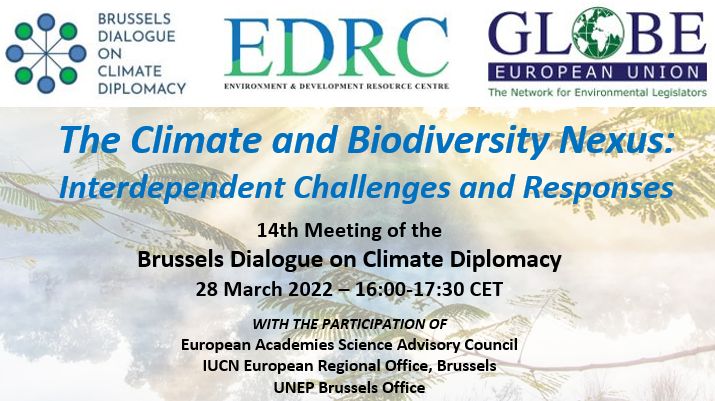
14th Meeting of the Brussels Dialogue on Climate Diplomacy
ON LINE EVENT - 28 March 2022 - 16:00-17:30 CET
The aim of the meeting - Co-organised by EDRC and GLOBE-EU - was to provide participants with insight into the inter-linkages between climate change and biodiversity loss – both in terms of the interconnected challenges and the need to address the two threats to environmental and human security together in a more coordinated way.
The meeting was organised ahead of the second part of the Fifteenth meeting of the Conference of the Parties (COP 15) of the Convention on Biological Diversity (CBD). Phase one took place in Kunming, China and virtually, from 11 to 15 October 2021 and included a High-Level Segment from 12 to 13 October.
According to the Geneva Environment Network site: With the participation of almost 2,918 delegates in Kunming, and 2,478 connecting online, part one of the UN Biodiversity Conference set the stage for the adoption of an effective post-2020 global biodiversity framework at the resumption of the meeting in Spring 2022. The conference’s two-day High-Level Segment opened with the announcement by Chinese President Xi Jinping of the 1.5 billion-yuan (about $233 million) Kunming Biodiversity Fund, saw the adoption of the Kunming Declaration, where Parties to the Convention on Biological Diversity committed to negotiate an effective post-2020 global biodiversity framework".
Phase two of the COP 15 in Kunming, has been rescheduled to take place in the 3rd quarter of 2022. According to the CBD website COP-15 will be held in the August 2022 (dates to be confirmed).
>>> Read more about the Post-2020 Global Biodiversity Framework and the Four Goals for 2050 >>>
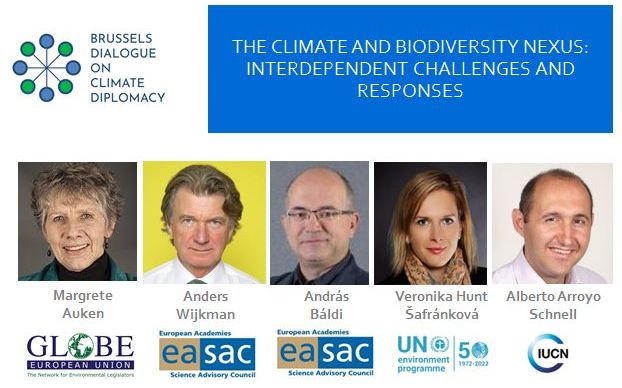
>>> Watch the video reportage of this event >>>
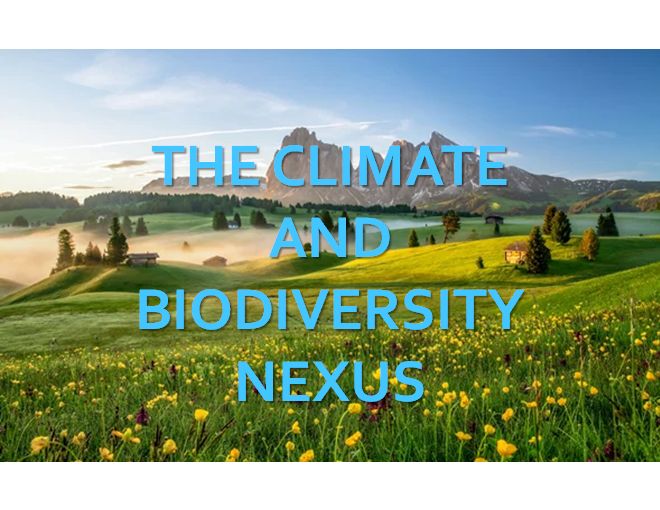
PROGRAMME
16:00 : Welcome and Introduction to the meeting by the Moderator: Ronald A. Kingham, Executive Director, EDRC
16:05 : Introductory Remarks by the Panelists:
Margrete Auken, MEP (DK|Greens), Member, GLOBE EU / Member, EP Committee on the Environment, Public Health and Food Safety / Member, EP Intergroup on the Welfare and Conservation of Animals / Member, EP Intergroup on Seas, Rivers, Islands and Coastal Areas - On the implications of climate change and biodiversity loss for environmental and human security
Anders Wijkman, Member, Environment Steering Panel, European Academies Science Advisory Council / Former president and Honorary Member, GLOBE EU / Honorary President, Club of Rome / Chairman, Swedish Association of Recycling Industries / Chairman, Governing Board of Climate-KIC / Former UN Assistant Secretary-General - On the interdependent challenges posed by the climate and biodiversity nexus
András Báldi, Member, Environment Steering Panel, European Academies Science Advisory Council / Member of Academia Europaea / Former member, Multidisciplinary Expert Panel, Intergovernmental Science-Policy Platform on Biodiversity and Ecosystem Services (IPBES) - On the interdependent solutions through the maintenance and restoration of eco-systems
Veronika Hunt Šafránková, Head, UNEP (United Nations Environment Programme) Brussels Office / Former, Policy Advisory and Former Director, International Relations, Charles University in Prague / Former Director, International Relations Department and Former Deputy Minister, Ministry of Environment, of the Czech Republic - On the institutional responses through UNEA-5, CBD, IPBES and the CBD COP 15
Alberto Arroyo Schnell, Head of Policy and Programme, European Regional Office, IUCN (International Union for the Conservation of Nature) / Former Chair, European Habitats Forum (EHF) / Former Senior Biodiversity Policy Advisor, WWF (European Policy Office) - On the programmatic responses and the urgency to address climate change and biodiversity loss together
16:30 : Panel Discussion
17:00 : Comments and Questions from the Participants / Responses by the Panelists
17:25 : Closing Remarks by the Moderator and the Co-organizers
17:30 : End
BACKGROUND INFORMATION
Common themes and objectives should lead to closer cooperation between the UNFCCC and the CBD
Message from European Science Academies for CBD COP15, 29 March 2022

The European Academies’ Science Advisory Council (EASAC) has reviewed recent science relating to two critical issues of climate change and biodiversity loss which underlie the scope and urgency of actions within both the United Nations Framework Convention on Climate Change (UNFCCC) and the Convention on Biological Diversity (CBD). We attach a discussion of the wide range of interactions between climate change and biodiversity, and the case for closercoordination and collaboration between the two conventions. We also provide reviews of the current state of the climate and consider whether climate change has already become ‘dangerous’ in the context of the UNFCCC’s undertaking to avoid ‘dangerous climate change’. Also attached in an Annex are key messages straddling the fields of both Conventions that emerge from EASAC’s analyses in recent years.
Regarding the first issue, climate change, if left unchecked, is likely to overtake land use change as the primary cause of biodiversity loss. In the other direction, ecosystems and their biodiversity buffer society from climate change by providing the resources that enable societies to adapt to climate change, and by absorbing greenhouse gases through carbon sequestration and storage. Addressing both crises can be achieved through use of nature-based solutions to remove carbon dioxide (CO2) and build resilience to climate change, while also enhancing biodiversity and human well-being. In contrast, separate treatment of both carries risks of actions in one domain having negative impacts on the other. This commentary concludes that both crises are critically urgent and require the most to be made as soon as possible of potential synergies andco-benefits.
Geneva Biodiversity Conference - Follow IISD ENB Coverage
The Geneva Biodiversity Conference - 14 - 29 March 2022 - is be covered in detail by the IISD Earth Negotiations Bulletin with daily reports.
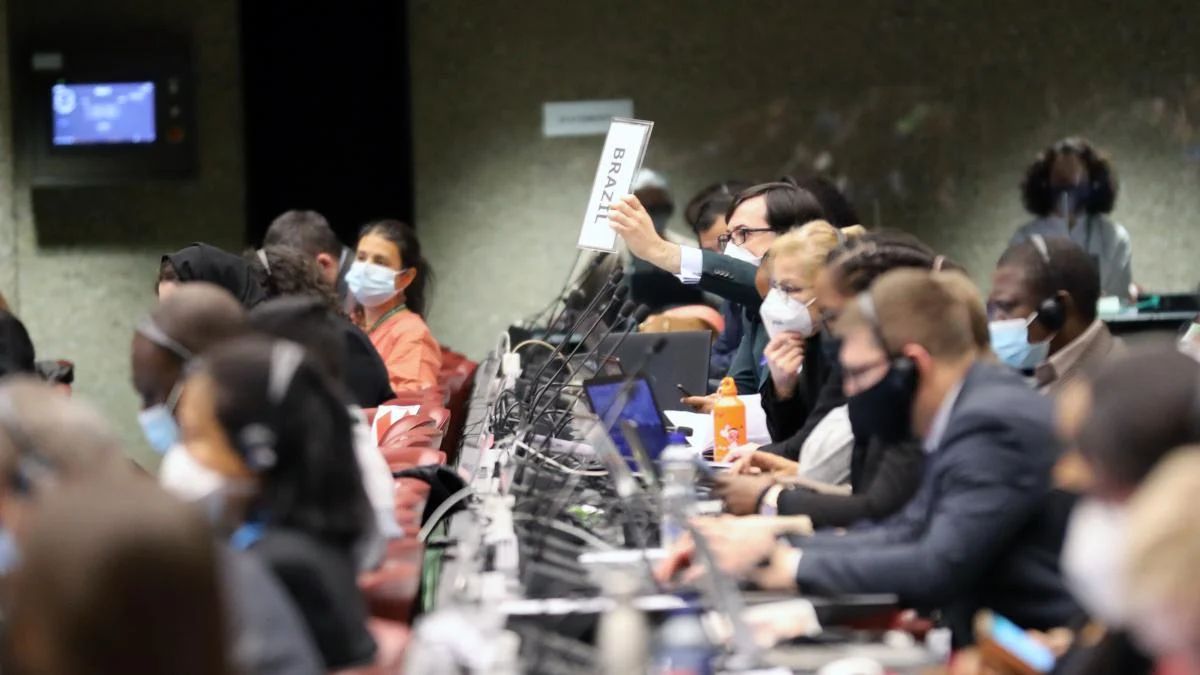
Photo by IISD/ENB Mike Muzurakis
The conference includes meetings of the Subsidiary Body on Scientific, Technical and Technological Advice and the Subsidiary Body on Implementation as well as the Open-ended Working Group on the post-2020 global biodiversity framework.
>>> READ THE FULL IISD / ENB COVERAGE >>>
Conference Agenda and Issues Explained
A separate article entitled "Next Steps for the Post-2020 Global Biodiversity Framework" published on 17 November 2021 is introduced by saying "While a lot of attention has gone to climate talks at the end of 2021, countries are also negotiating biodiversity targets".
"In the face of unprecedented biodiversity loss and amid a global pandemic, countries are negotiating new targets to halt ecosystem decline by 2030 and shift into biodiversity restoration by 2050. The new goals—called the post-2020 Global Biodiversity Framework—are far from settled".
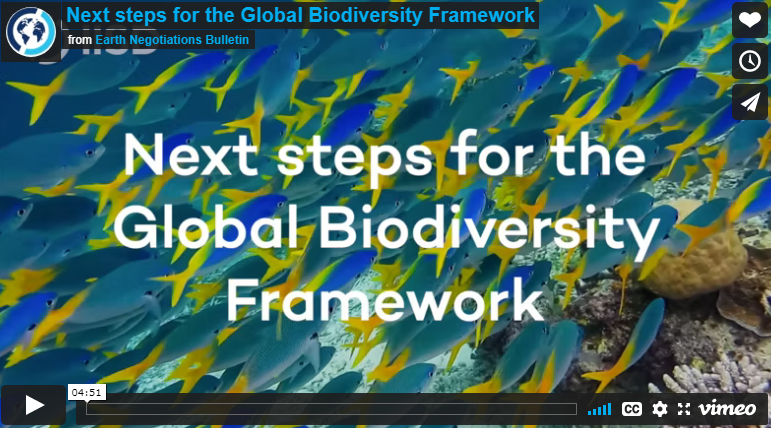
Watch the video report by Earth Negotiations Bulletin writer and editor Wanja Nyingi as she "explains where progress is being made, where parties to the Convention on Biological Diversity are diverging, and what to expect when talks shift into a higher gear in ... an in-person meeting in Geneva".
Key Messages from European Science Academies for UNFCCC COP26 and CBD COP15
European Academies Science Advisory Council (EASAC), 16 August 2021
 | The urgency of the climate and biodiversity crises requires closer coordination between UNFCCC and CBD - a Commentary by EASAC "The recent IPCC Report confirms that global warming is getting faster and faster. The impact is playing in real time as we watch villages flood and forests burn. Meanwhile the hidden crisis of biodiversity loss continues with the loss of forests to land clearance, exacerbated by the fires. As the Climate and Biodiversity Crises potentiate each other, EASAC’s new Commentary adds the most recent data to inform both the UN Glasgow Climate Summit and the Biodiversity Summit in China with a focus on 16 areas requiring urgent action to shield humanity from the worst.” An updated version of the report is to be released on 29 March 2022. >>> READ MORE >>> |
IPBES-IPCC CO-SPONSORED WORKSHOP REPORT ON BIODIVERSITY AND CLIMATE CHANGE: Workshop Report
Intergovernmental Science-Policy Platform on Biodiversity and Ecosystem Services (IPBES), 10 June 2021
 | “Climate change and biodiversity loss are two of the most pressing issues of the Anthropocene. While there is recognition in both scientific and policy-making circles that the two are interconnected, in practice they are largely addressed in their own domains. … The joint IPBES-IPCC workshop set out to explore these complex and multiple connections between climate and biodiversity. This workshop and its report represent the first ever joint collaboration between the two intergovernmental bodies and therefore a landmark activity in both of their histories. The scientific community has been working for some time on the synergies and trade-offs between climate and biodiversity. Examples of a synergy include an action taken to protect biodiversity that simultaneously contributes to the mitigation of climate change; or an action increasing the capacity of species or ecosystems to adapt to those climate changes that cannot be avoided. In contrast, negative trade-offs can result, for instance, if an action taken to mitigate climate change by using the land or ocean to absorb greenhouse gases results in loss of biodiversity or the supply of other nature-linked benefits that flow from the affected ecosystems. Only by considering climate and biodiversity as parts of the same complex problem, which also includes the actions and motivations and aspirations of people, can solutions be developed that avoid maladaptation and maximize the beneficial outcomes. Seeking such solutions is important if society wants to protect development gains and expedite the move towards a more sustainable, healthy and equitable world for all. The role of science in addressing the current pandemic illustrates how science can inform policy and society for identifying possible solutions.” >>> READ MORE >>> |
United Nations Environment Assembly (UNEA-5) Adopts new Resolution on Biodiversity and HealthUNEP, Nairobi, 2 March 2022
 | “The theme of the Fifth session of the United Nations Environment Assembly (UNEA-5) held in Nairobi, 28 Feb - 2 Mar 2022 was Strengthening Actions for Nature to Achieve the Sustainable Development Goals. The UNEA-5 agreed on 14 resolutions to curb pollution, protect and restore nature worldwide.In the spirit of the UN Decade for Ecosystem Restoration, a … key resolution agreed by the Assembly focuses on nature-based solutions: actions to protect, conserve, restore, sustainably use and manage ecosystems. The resolution calls on UNEP to support the implementation of such solutions, which safeguard the rights of communities and indigenous peoples. Inger Andersen, Executive Director of UNEP, said: 'Having a universally agreed definition of nature-based solutions is important. When countries and companies claim that their actions are supporting nature-based solutions, we can now begin to assess whether this is accurate and what it entails. This is especially true given the just-released report by the Intergovernmental Panel on Climate Change on the need to scale-up adaptation, for which nature-based solutions will be crucial.' A concluding Ministerial Declaration recognised the risk for future pandemics and other health risks if humanity doesn’t overhaul its patterns of interaction with nature by adopting a holistic approach such as One Health. Another resolution on biodiversity and health calls on Member States to reduce health risks associated with trade in live wildlife captured for the purposes of food, captive breeding, medicines and the pet trade, through regulation and sanitary controls. The Ministerial Declaration stressed the urgent need to halt the global decline of biodiversity and the fragmentation of habitats, unprecedented in human history and driven by changes in land and sea use, exploitation of nature, unsustainable consumption and production patterns, climate change, invasive alien species and pollution of ocean and fresh water, air and soil. In this context, the Assembly adopted a resolution to accelerate actions to significantly reduce nitrogen waste from all sources, especially through agricultural practices, and saving US $100 billion annually.” >>> READ MORE >>> |
Revising LULUCF regulation could be a chance for both climate and biodiversity
Ulriikka Aarnio, AirClim – Air Pollution & Climate Secretariat / Acid News 4 December 2021
 | The European Union carbon sink must more than double by 2030. The cheapest way to do this is by protecting and restoring forests, peatlands, and other natural ecosystems. “While drastic emission reductions are key to averting catastrophic climate change, diverse and resilient lands and forests have long been recognised as equally important. The ways we use our land and forests require urgent changes which should be in line with the speed and scale of the climate emergency we are facing. Following an agreement on a revised EU 2030 target of at least 55% net greenhouse gas emission reductions, in July the European Commission presented proposals to revise the EU climate and energy legislation for the period 2021–2030, including the EU Regulation on Land Use, Land Use Change and Forestry, known as LULUCF, which aims to tackle the carbon flows in forests and on land in the EU. … The LULUCF sector is fundamental, not just to climate change mitigation, but also to the EU’s natural environment, its wildlife and people. Changes in the incentives for forestry and land use can have either negative or positive consequences for biodiversity. The revised legislation must remain mindful of the impacts to biodiversity and ensure that concrete links are drawn between the LULUCF Regulation and the EU’s biodiversity objectives, including those set out in the Biodiversity Strategy, in the Restoration Law and the Birds and Habitats Directive. The revision of the LULUCF Regulation is an important opportunity in the EU’s aim to mitigate both climate and biodiversity crises. For this to happen, more adequate targets as well as better-defined and transparent rules are needed in order for the LULUCF sector to stay in line with the path towards climate neutrality. Protecting and restoring forests, peatlands, and other natural ecosystems remains the cheapest, most effective and only readily available way to accomplish that. …” >>> READ MORE >>> Read more about Land Use, Land-Use Change and Forestry (LULUCF) on the United Nations Climate Change web site. |
Recommended Video: How does climate change affect biodiversity?
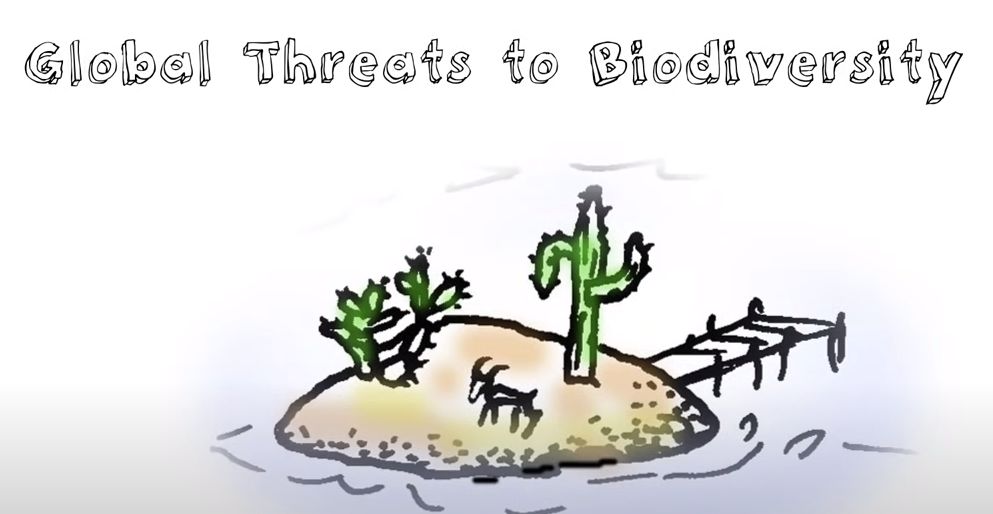
This animated tutorial from the California Academy of Sciences provides a great introduction on "What is climate change and why does it receive so much attention these days? Human activities are heating up Earth, with far-reaching consequences, changing biodiversity levels and distributions at alarming, unprecedented rates". >> Watch the tutorial >>